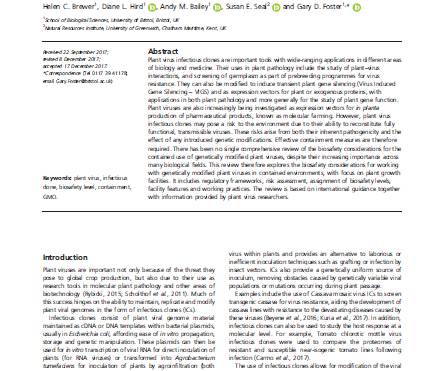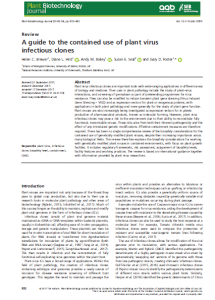Plant virus infectious clones are important tools with wide-ranging applications in different areas of biology and medicine. Their uses in plant pathology include the study of plant–virus interactions, and screening of germplasm as part of prebreeding programmes for virus resistance. They can also be modified to induce transient plant gene silencing (Virus Induced Gene Silencing – VIGS) and as expression vectors for plant or exogenous proteins, with applications in both plant pathology and more generally for the study of plant gene function. Plant viruses are also increasingly being investigated as expression vectors for in planta production of pharmaceutical products, known as molecular farming. However, plant virus infectious clones may pose a risk to the environment due to their ability to reconstitute fully functional, transmissible viruses. These risks arise from both their inherent pathogenicity and the effect of any introduced genetic modifications. Effective containment measures are therefore required. There has been no single comprehensive review of the biosafety considerations for the contained use of genetically modified plant viruses, despite their increasing importance across many biological fields. This review therefore explores the biosafety considerations for working with genetically modified plant viruses in contained environments, with focus on plant growth facilities. It includes regulatory frameworks, risk assessment, assignment of biosafety levels, facility features and working practices. The review is based on international guidance together with information provided by plant virus researchers.
Region: Not specific
Date published:
2018
Published by:
Plant Biotechnology Journal
Type of resource:
Journal article
Resource topic:
Pest control
Project/Programme: Not specific
Pest/Disease: Not specific
Pages:
12
File type:
External link (464 KB)




